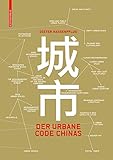Der urbane Code Chinas / Dieter Hassenpflug.
Material type: TextPublisher: Basel : Birkhäuser, [2013]Copyright date: ©2013Edition: 2., überarb. u. akt. AuflDescription: 1 online resource (200 p.)Content type:
TextPublisher: Basel : Birkhäuser, [2013]Copyright date: ©2013Edition: 2., überarb. u. akt. AuflDescription: 1 online resource (200 p.)Content type: - 9783034613033
- 9783034609029
- Architecture -- History -- 21st century -- China
- Architecture -- China -- History -- 21st century
- Cities and towns -- China
- Cities and towns -- China
- City planning -- China
- City planning -- China
- National characteristics, Chinese -- China
- National characteristics, Chinese
- Urbanization -- China
- Urbanization -- China
- ARCHITECTURE / History / General
- 720.951 23
- NA9265
- online - DeGruyter
| Item type | Current library | Call number | URL | Status | Notes | Barcode | |
|---|---|---|---|---|---|---|---|
 eBook
eBook
|
Biblioteca "Angelicum" Pont. Univ. S.Tommaso d'Aquino Nuvola online | online - DeGruyter (Browse shelf(Opens below)) | Online access | Not for loan (Accesso limitato) | Accesso per gli utenti autorizzati / Access for authorized users | (dgr)9783034609029 |
Frontmatter -- Inhalt -- Vorwort zur Neuausgabe -- Einführung -- 1. Kann man Stadt lesen? -- 2. Transformationen des leeren Stadtraumes -- 3. Schwingende Zeilen und tanzende Punkte -- 4. Der abgeschlossene Stadtraum -- 5. Der aufgeschlossene Stadtraum -- 6. Stadtfiktionen -- 7. Kompakte Stadt -- 8. Die chinesische Stadt als System von Bedeutungen -- Zusammenfassung -- Anhang: Anmerkungen, Bibliografie, Bildnachweise -- Backmatter
restricted access online access with authorization star
http://purl.org/coar/access_right/c_16ec
Die Gestalt der chinesischen Stadt entschlüsseln In neuer Ausstattung bietet die zweite Auflage des Buches die verbesserte und aktualisierte Version des erfolgreichen, inzwischen in mehrere Sprachen übersetzten urbanistischen Fachbuches über den urbanen Code der chinesischen Stadt. Es geht hier nicht primär um bekannte Städte wie Peking, Shanghai oder Shenzhen, sondern um jene Formen, Strukturen, Zeichen und Botschaften, die das Chinesische der chinesischen Stadt ausmachen. Erst die Dekodierung der Sinität der chinesischen Stadt eröffnet die Möglichkeit, die Vielfalt der empirischen Eindrücke richtig zu gewichten und sinnvoll einzuordnen. So liefert dieses Buch auch einen Schlüssel zum Verständnis der aktuellen Hyperurbanisierung und der Vielzahl westlicher Städtebauprojekte in China.
When reading the Chinese city, which this book sets out to do, it is not the well-known cities such as Beijing, Shanghai, and Xi an that are in the focus of attention, but rather the essentially Chinese of the Chinese city, those characteristics or attributes that are more or less shared by all Chinese cities. The spotlight is on their spatial grammar, their syntax, in short: their code. Only by deciphering their common traits a view to the underlying structure of Chinese cities is opened, and we can begin to reasonably evaluate and classify the diversity of impressions. Deciphering the code of the Chinese city also enables the author to read new Chinese towns designed by Western architects. Thus, readers are provided with valuable insight on China s booming urbanization and urban development.
Mode of access: Internet via World Wide Web.
In German.
Description based on online resource; title from PDF title page (publisher's Web site, viewed 29. Nov 2021)


